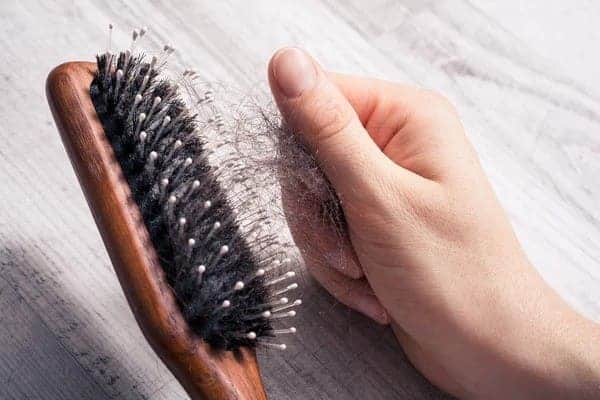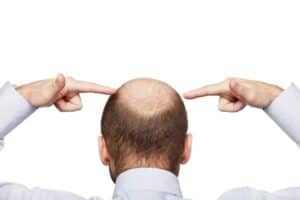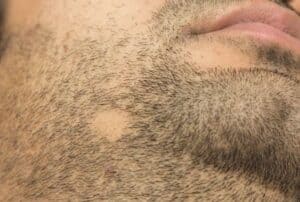Hair transplant shedding affects all patients in the first couple of weeks after surgery. Usually, this is nothing to worry about! On this page, you will find everything you need to know about hair transplant shedding: why it happens, how long it will last, and what you can do to speed up the aftercare process.
Overview
Hair shedding is a very common part of the hair transplant aftercare process. It affects all patients and is usually nothing to worry about. This completely normal event does not require you to take any medication and does not mean you will need a second hair transplant surgery!
Hair Transplant Shedding: What is It?
So, you have just had your FUE hair transplant at one of our clinics. You have waded through the initial 14 day recovery period; your scalp has healed nicely and the initial growth of your new hair follicles has begun. However, you begin to notice quite severe hair loss in the transplanted area (recipient site). What do you do?
The truth is, post-hair transplant shedding is a common occurrence after a hair restoration procedure. Usually around week 4-6 post surgery, patients may begin to see hair loss in the region where they have just had their hair transplant. It is sometimes referred to as “shock hair loss”.
Whilst many patients usually see this hair loss and begin to panic, shedding after a hair transplant is completely normal and a sign that everything is going ahead as planned in your aftercare routine!
How Does Hair Transplant Shedding Look?
One of the key questions we are asked by patients is “how is hair transplant shedding supposed to look?” and “how can I tell I am going through shedding and not general hair loss?”. Understandably, patients always want to be in the know about their aftercare, and it’s important we tell you what you should be looking out for.
- Hair loss in the transplanted area – this may be the hairline, crown, or mid-parting (for women) area.
- Visible hair follicles leaving the scalp – you may find excess hair on your hairbrush, pillow, or plughole.
- Hair follicles without the root attached – you should only be able to see the hair follicle itself. You should not be able to see the hair follicle root.
At this point, it might also be worth taking stock of your aftercare process and how well you’re progressing after your hair transplant surgery. Your recipient site and donor area should have healed fully and there should be no scabs or scars leftover.
Redness or itchiness may also be something you’re suffering with. If this occurs within the first couple of weeks, be sure to contact your hair transplant surgeon, or consultant. This is just to check that you’re not suffering with dermatitis in the weeks after your surgery – as this may affect your hair regrowth chances post-shedding.
The Science Bit: Why Does Hair Transplant Shedding Occur?
Hair transplant shedding is a natural occurrence after your hair transplant. It is caused by a process called telogen effluvium, a temporary hair loss condition induced by the erratic changes in blood supply in the weeks after your hair transplant.
Telogen effluvium usually resolves itself within a couple of weeks (in most cases, most of our patients tend to see hair growth around 4 weeks after first suffering with the shedding of transplanted hair) and does not require you to take any extra medication (minoxidil or finasteride) or have a corrective surgery.
In the weeks after your hair transplant, blood supply around the scalp is still interrupted, largely by the saline and local anaesthetic used during the surgery. As telogen effluvium is caused as a response to stressful stimuli, this causes the shedding of transplanted hair or, to give it it’s other name, “shock hair loss”.
In turn, the telogen phase of your newly transplanted hair follicles is elongated, causing shock loss of the hair grafts. However, hair begins to grow fairly quickly after this and the hair growth cycle after the shedding phase should take place as usual.
So, a good way to think about the shock shedding process is a “tuning up”, or “training”, of your transplanted hair follicles before their first proper hair growth cycle.
Hair Transplant Aftercare: How To Manage Hair Shedding
Caring for your scalp and the transplanted area during the shedding phase is crucial to ensure a successful recovery and the growth of healthy new hair after your hair transplant. So, we have devised this handy list to help you along your hair shedding journey!
Follow Your Surgeon’s Instructions
After your hair transplant, you will be provided with a full aftercare package, and a set of post-operative care instructions. It’s essential to follow these guidelines carefully, as they are tailored to your specific case.
Although these instructions are usually referencing the initial 14 days after hair transplantation, they do contain loads of handy information about washing, scalp care, and what to expect beyond your 14 day recovery period.
Some elements of your aftercare you may want to take notice of if you want to minimise hair transplant shedding are the following:
- Gentle washing: You should keep your scalp clean to prevent infection, but avoid vigorous or aggressive washing. Use a mild, non-medicated shampoo as recommended by your surgeon. Gently lather and rinse the scalp without rubbing or scrubbing.
- Avoid hot water: Use lukewarm or cool water when washing your hair, as hot water can irritate the scalp and increase the risk of scab formation.
- Pat, don’t rub: After washing your head, pat your scalp dry with a clean, soft towel rather than rubbing it. Be gentle to avoid dislodging any of your hair grafts. The last thing you want to do is caue undue hair shedding by being to vigorous during washing and drying.
- Avoid scratching: Itching is common during the shedding phase. Avoid scratching your scalp to prevent damage to the grafts. Your surgeon may provide recommendations for managing itching.
Supplement With Other Hair Loss Treatments
Once you have had your hair transplant, your journey is still far from complete! medications such as minoxidil and finasteride can play a vital role in strengthening your hair follicles. Not only could this reduce the amount of hair shedding you experience, it is also going to futureproof your hair follicles against further hair shedding.
As well as this, finasteride and minoxidil will also help to prevent hair loss across the scalp as well as your transplanted hair. At Harley Street Hair Transplant Clinics, we offer both of these medications (and dutasteride, as well) on prescription. Don’t hesitate to contact your consultant if you would like to take any of these medications to ease your hair shedding symptoms.
Eat a Balanced Diet
After your hair transplant, it’s vital you eat a balanced diet with plenty of nutrients that support hair growth, such as protein, vitamins, and minerals. Your surgeon may also recommend specific supplements. This is going to be vital in helping your hair follicles grow post shedding phase!
As well as this, be sure to stay hydrated! Drink plenty of water to support overall healing and hair growth. It may also be wise to avoid smoking and excessive alcohol consumption, as this can constrict the blood flow to your hair follicles, making it more difficult for them to regrow after the shedding phase.
FAQs
Making sure you’re on track is key at this point of your hair transplant journey. If you think something doesn’t look quite right, or you just have a couple of questions then contact your consultant and we can arrange a consultation for you!
If you think your hair shedding after a hair transplant includes the follicle root, then don’t hesitate to contact your consultant. What we will need from you is a close up image of some of your shedded hair grafts. Then, we can send these off for analysis and give you a response swiftly.
No, shedding of transplanted hair is not affected by the hair transplantation you choose to go with. Whether you have an FUE hair transplant, or go for FUT or DHI, hair transplant shedding is largely the same and will, generally, occur for the same amount of time.
If you’re looking to minimise the appearance of hair shedding post hair transplantation, then it is entirely possible to do so by wearing a hat or cap. After your 14 recovery period, wearing a hat is absolutely fine. So, that will probably be the cheapest and most effective option to hide hair shedding after a hair transplant.
Itchiness is a common feature of hair shedding, but isn’t something that should be painful or consistent. If you feel a constant itch, check the area for any dry skin or redness. If you are suffering with redness or itchiness, don’t hesitate to contact your consultant.
Yes, after the hair transplant, all patients will have a follow up consultation at month 3, 6, 9, and 12 post-procedure. After the shedding phase, you will be due your 3 month appointment where you can ask any questions or queries you may have!








